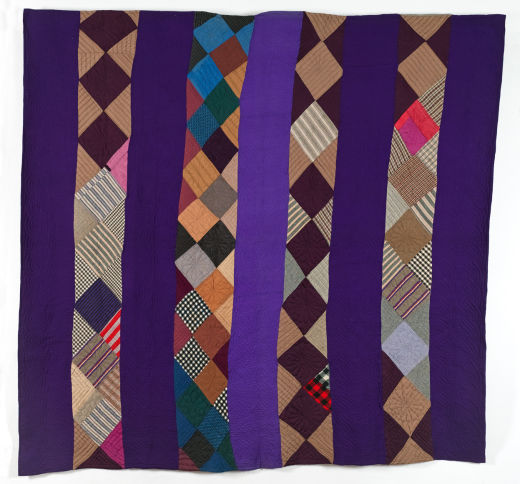Patchwork and Purple Strippy
Move your mouse cursor over the image to examine this quilt in detail.
- Maker:
- UNKNOWN
- Date:
- 1850 - 1900
A mix of cottons and wool, this striking quilt has a very contemporary feel due to the arrangement of the square diamonds and plain strips of fabric. Unlike some of the more showy pieces on display, this quilt is first and foremost a practical and utilitarian piece made for a traditional function of providing warmth and comfort.
One of the most striking elements of this quilt is the bright colours, particularly the purple stripes. In 1856, the first synthetic dye, a purple called ‘mauveine’, was accidently discovered by W. H. Perkin, a 17 year old Chemistry student who was attempting to synthesize the anti-malaria drug quinine from coal tar. This bright purple aniline dye, bonded well with protein fibre fabrics such as silk and wool, and provided a vibrant colour that couldn’t be matched by the vegetable dyes used in cotton printing. Perkins went on to establish a Dye works and subsequently discovered and patented many other synthetic dyes including ‘Britannia Violet’ and ‘Perkins Green’.
204cm x 202cm
